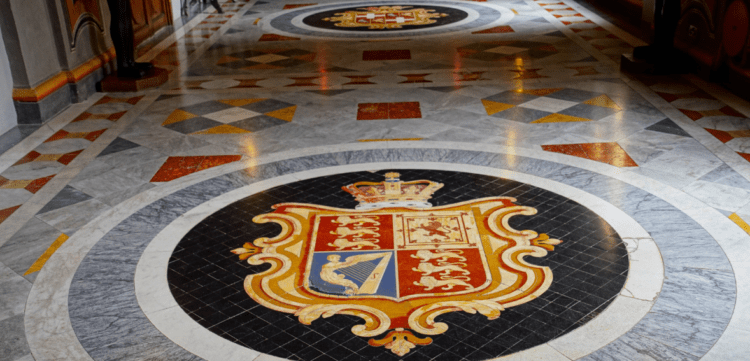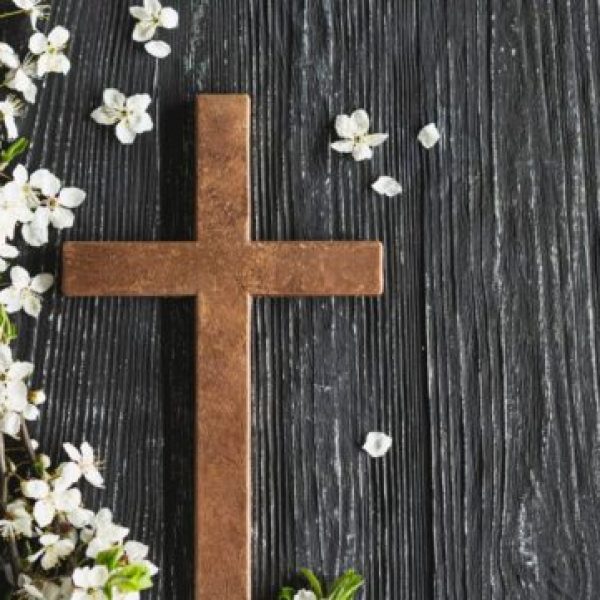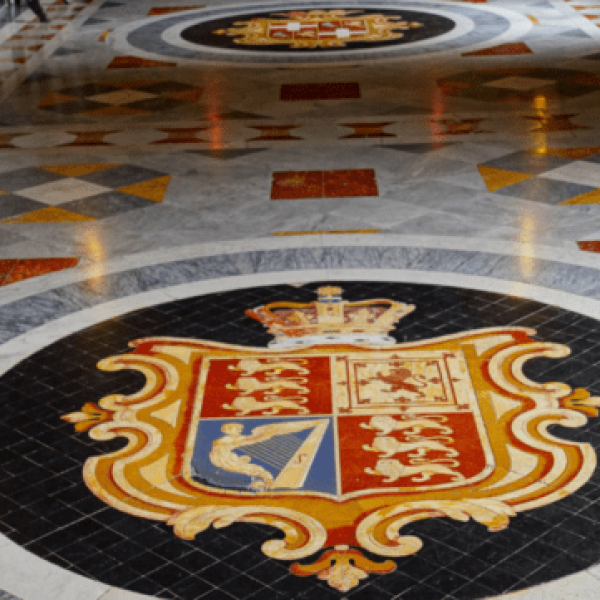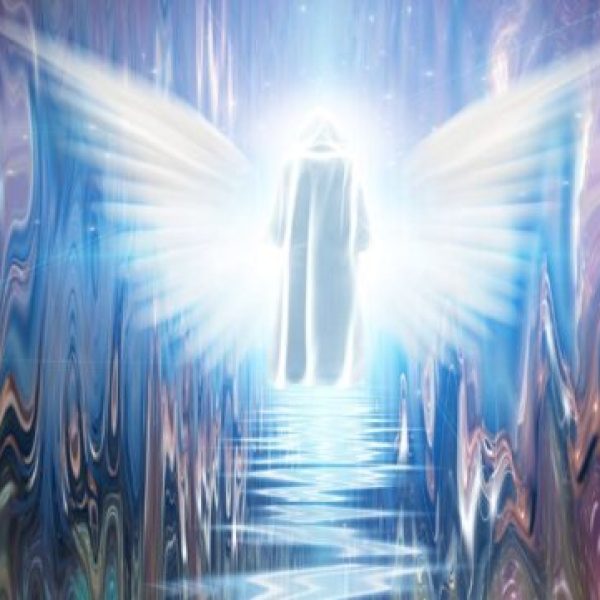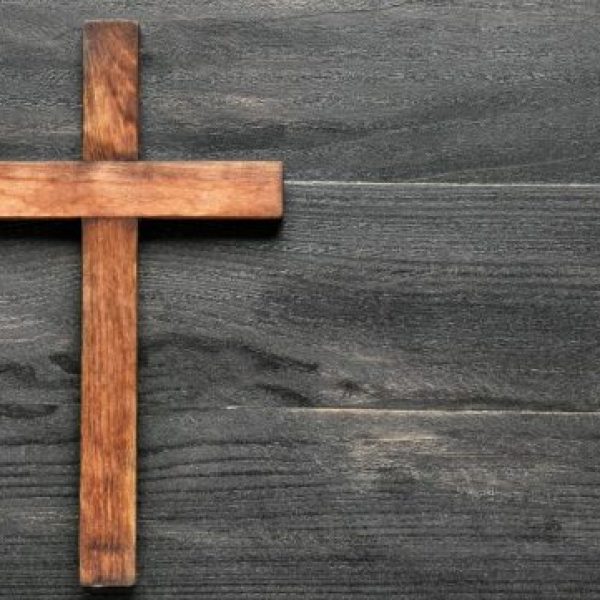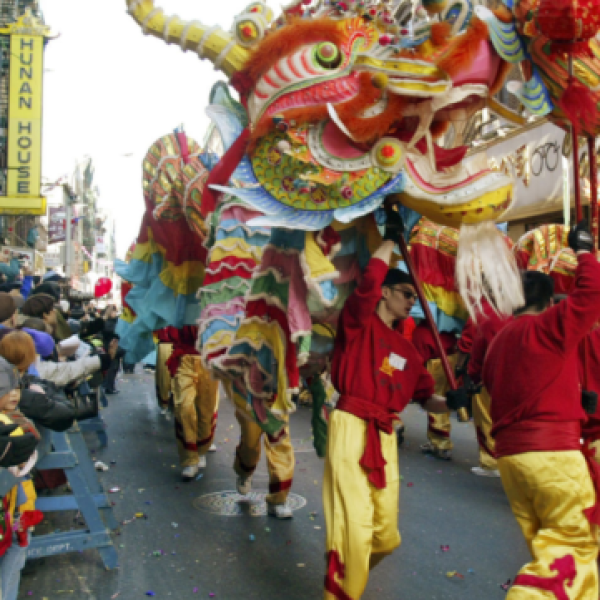The Advent season, marked by hopeful anticipation and spiritual preparation, leads Christians around the world towards the joyful celebration of Christmas, commemorating the birth of Jesus Christ. Among the rich tapestry of traditions observed during this time, the Jesse Tree stands out as a unique and profound symbol that connects the faithful with the very roots of their belief.
This tradition, deeply embedded in Christian history, is not just a decorative exercise but a reflective journey through the lineage of Jesus, linking generations of biblical figures to the Messiah. In this article, we explore the origins, meanings, and contemporary relevance of the Jesse Tree, offering insights into how this age-old custom can enhance the spiritual experience of Advent, making it a period of meaningful contemplation and communal engagement.
Join us as we delve into the symbols of the Jesse Tree, each ornament hanging on its branches not merely as a decoration, but as a narrative of faith, prophecy, and salvation.
What is a Jesse Tree? Meaning of the Advent Tradition
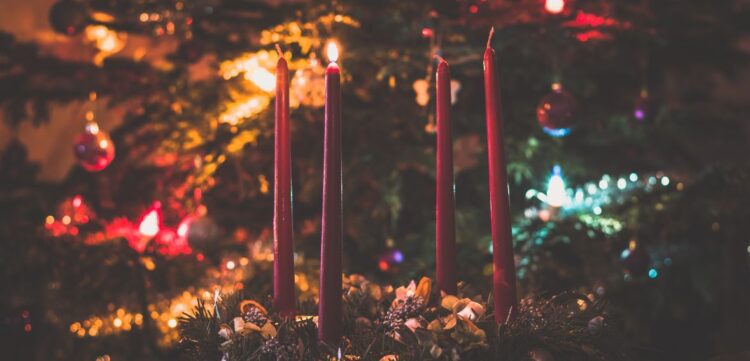
The Jesse Tree is an Advent tradition that represents the genealogy of Jesus Christ, tracing His lineage through ancestors in the Old Testament. The name “Jesse Tree” is derived from Jesse of Bethlehem, the father of King David. It is mentioned in Isaiah 11:1, “A shoot will come up from the stump of Jesse; from his roots, a Branch will bear fruit.”
Symbolic Elements of the Jesse Tree
Each ornament on the Jesse Tree symbolizes a biblical story or character that connects to Jesus’ lineage, beginning with creation and extending through the Old Testament to the birth of Christ. This tradition serves as a visual and thematic representation of God’s salvation plan, unfolded through centuries.
The History of the Jesse Tree
The Jesse Tree is a rich tradition that embodies the genealogy of Jesus Christ, tracing his lineage through a series of symbols and stories drawn from the Old Testament. This concept, which takes its name from Jesse, the father of King David, has been a vital part of Christian iconography and storytelling, particularly during the medieval era when it flourished in various forms of religious art.
Origins and Development of the Jesse Tree Tradition
The imagery of the Jesse Tree originates from the prophecy of Isaiah, which states, “A shoot will come up from the stump of Jesse; from his roots a Branch will bear fruit” (Isaiah 11:1). This prophecy is interpreted as foretelling the coming of the Messiah, a descendant of Jesse who would be a leader and savior. Medieval artists and theologians seized upon this imagery, creating vivid representations that not only beautified sacred spaces but also functioned as instructional aids.
In the medieval period, when the majority of the population was illiterate, visual representations in churches played a crucial role in religious education. Stained glass windows, tapestries, and carvings often depicted biblical scenes and genealogies in a format that was accessible to all. The Jesse Tree was typically shown as a literal tree, sometimes sprouting from the reclining figure of Jesse at its base. The branches would ascend toward heaven, each bearing a figure from the genealogy of Christ, including great biblical characters such as Abraham, David, and Solomon, leading up to the Virgin Mary and Jesus himself at the apex.
Artistic Depictions and Symbolic Interpretations
These artistic depictions were not merely decorative; each element was loaded with meaning and intent. The Jesse Tree served as a visual summary of God’s long preparation for the coming of Christ. Each character on the tree held symbolic significance, representing virtues, prophetic visions, or pivotal moments in the story of salvation. For instance, King David might be shown with a harp, symbolizing his role as a psalmist, while Solomon might hold a model of the temple, indicating his wisdom and his contributions to the worship of God.
Jesse Tree symbols and meanings provided a framework through which parishioners could understand their faith’s deep roots and divine providence. These symbols acted as mnemonic devices, helping the faithful to remember stories and teachings from the Scriptures.
Jesse Tree Today
In modern times, the tradition of the Jesse Tree has been adapted for use during the Advent season. Families and congregations create their own Jesse Trees, adding ornaments that represent the stories and figures leading up to the birth of Jesus. This practice not only enriches the understanding of Jesus’ historical and spiritual context but also connects participants with a centuries-old tradition of visual storytelling and spiritual reflection.
The enduring appeal of the Jesse Tree lies in its ability to convey deep theological truths through art and symbolism. It underscores the continuity of faith through generations, linking the past with the present in a living narrative of faith and salvation. The Jesse Tree remains a poignant reminder of the breadth and richness of the Christian tradition, drawing believers into a deeper understanding of where they come from and to whom they belong.
Jesse Tree Symbols and Meanings
The Jesse Tree is a unique Advent tradition that visually represents the genealogy of Jesus Christ through various symbols ornamenting a tree. Each ornament embodies a pivotal figure from the Bible, illustrating the lineage and prophetic events leading to the birth of Jesus. Here, we will explore the symbols associated with key figures in the Jesse Tree, integrating the keyword “Jesse Tree Symbols and Meanings” to enhance understanding of this rich tradition.
1. God the Father
The symbol often associated with God the Father is the sun or a radiant light. This imagery represents the creation of the world, highlighting God’s role as the omnipotent creator. The sun, a universal source of light and life, aptly symbolizes the inception of the universe, setting the stage for the biblical narrative that unfolds.
2. Adam and Eve
Adam and Eve are typically symbolized by a fruit or a tree, which are poignant reminders of the Garden of Eden and humanity’s fall from grace. The fruit, often an apple, represents the forbidden fruit that led to the original sin, impacting all subsequent generations. This symbol serves as a critical foundation for the need for salvation, a theme central to the Jesse Tree narrative.
3. Seth
Seth, a lesser-known figure, is symbolized by a book or scroll. This iconography represents the preservation of the righteous lineage through which the promise of salvation is sustained. Seth’s role is crucial as it connects Adam to Noah, maintaining the genealogical and spiritual link necessary for the fulfillment of biblical prophecy.
4. Noah
Noah’s symbols are the rainbow and the ark, each representing God’s covenant with humanity and the promise never to destroy the earth with a flood again. The rainbow is particularly significant as it symbolizes hope and God’s mercy, reaffirming His ongoing relationship with His creation despite human failings.
5. Shem
Represented by a tent or an altar, Shem’s symbols reflect the nomadic lifestyle of the patriarchs and their continual worship of God. The altar signifies the sacrifices made to God, underscoring the theme of devotion and obedience that is echoed throughout the lineage of Jesus.
6. Abraham
Abraham’s symbols, a star and sand, signify God’s covenant with him—the promise that his descendants would be as numerous as the stars in the sky and the sand on the seashore. These symbols not only highlight God’s promise but also Abraham’s faith, which is foundational to the Judeo-Christian heritage.
7. Jacob
Jacob is symbolized by a ladder, referring to his visionary dream of a ladder reaching to heaven with angels ascending and descending on it. This dream symbolizes the connection between God and humanity, and the ladder itself represents the direct link between heaven and earth, prefiguring the bridging of the divine and human in the person of Jesus Christ.
8. Joseph
Joseph’s symbols, a colorful coat or a sheaf of wheat, represent his tumultuous yet divinely guided journey. The coat symbolizes his father’s favor and the jealousy it provoked, while the sheaf of wheat reflects his pivotal role in saving Egypt and his family from famine, illustrating how God’s plans are fulfilled through human history.
9. Moses
Moses is symbolized by the Tablets of the Law, representing the Ten Commandments given to him on Mount Sinai. These laws are foundational to the moral and spiritual conduct expected of God’s people and highlight the theme of law and redemption threading through the Old Testament to the teachings of Jesus.
10. Joshua
Joshua’s symbols, a horn or a wall, symbolize the fall of Jericho, a pivotal moment in the Israelites’ conquest of the Promised Land. These symbols reflect divine intervention and victory, reinforcing the theme of God’s faithfulness to His promises and His active role in the history of His people.
Each symbol on the Jesse Tree enriches the narrative tapestry of Jesus’ genealogy, connecting pivotal Old Testament events and figures directly to the life and mission of Christ. Understanding these “Jesse Tree Symbols and Meanings” offers a deeper appreciation of the biblical story and its fulfillment in the person of Jesus, making the Jesse Tree a profound and educational Advent tradition.
How to Use a Jesse Tree in Advent
The Jesse Tree is a cherished Advent tradition that not only complements the decorative aspect of holiday preparations but also enriches the spiritual journey toward Christmas. Here’s a detailed guide on how to use a Jesse Tree effectively during Advent, integrating the keyword “Jesse Tree Symbols and Meanings” to enhance understanding.
1. Daily Reflection and Devotion
The Jesse Tree serves as a visual and spiritual countdown to Christmas, with each day of Advent dedicated to a particular Biblical story or figure, symbolized by an ornament. Each ornament represents a specific story from the Bible that traces the lineage of Jesus, reflecting on significant ancestors and prophetic symbols that foretell the coming of Christ.
This daily ritual involves hanging a new ornament on the tree and reading the corresponding scripture, thus allowing individuals or families to meditate on the unfolding of God’s salvation plan. This practice not only reinforces the continuity of the Bible’s narrative but also allows for a deeper personal or communal reflection each day.
2. Interactive Learning for All Ages
The Jesse Tree is an exceptional educational tool that engages participants of all ages. For children, it transforms the stories of the Bible into tangible and memorable visuals. Each ornament brings a story to life, making complex theological concepts accessible and intriguing.
Adults, too, can benefit from this interactive learning approach, as it revisits foundational stories that are central to Christian faith. This method of storytelling fosters a richer understanding of “Jesse Tree Symbols and Meanings,” linking past prophecies to their fulfillment in Jesus.
3. Creating a Sacred Space
Positioning the Jesse Tree in a prominent place at home can turn an ordinary corner into a sacred space, serving as a visual reminder of the season’s spiritual significance. This sacred space invites those who pass by to pause and reflect, whether it’s through a brief contemplation of the day’s ornament or a longer period of personal meditation.
The presence of the Jesse Tree reinforces the Advent atmosphere, continuously reminding everyone in the home of the ongoing spiritual journey towards the celebration of Christmas.
4. Facilitating Meaningful Conversations
The daily symbols on the Jesse Tree do more than decorate; they also serve as catalysts for deeper discussion among family members. Each ornament can spark conversations about faith, the historical context of the Bible, and personal beliefs.
Discussing these themes can strengthen family bonds and foster a shared spiritual growth. Moreover, reflecting on the meanings behind these symbols can provide insights into one’s own spiritual path and the communal journey of faith.
5. Integration with Daily Advent Practices
The Jesse Tree complements other Advent customs, such as the lighting of the Advent wreath. Each practice enriches the other, weaving a tapestry of rituals that deeply embed the spiritual significance of Christmas into daily life.
For instance, as the Advent wreath’s candles are lit to symbolize the light of Christ coming into the world, the Jesse Tree visually narrates the historical and prophetic context of this light. This holistic approach to Advent practices enhances the anticipation and preparation for the celebration of the Nativity.
Incorporating the Jesse Tree into your Advent observance offers a multidimensional approach to preparing for Christmas, emphasizing reflection, education, conversation, and spirituality. By understanding and utilizing “Jesse Tree Symbols and Meanings,” the season becomes not only a time of festive decoration but also of profound spiritual renewal and connection.
Creating Your Own Jesse Tree
Creating your own Jesse Tree is a wonderful way to visually recount the biblical story of Jesus’ ancestry during the Advent season. Here’s how you can create a meaningful Jesse Tree with detailed steps:
1. Gather Materials
To begin, choose the base for your Jesse Tree. You have several options:
Real Tree Branch: Find a sturdy branch and place it in a vase or pot filled with stones or sand for stability. This gives a natural look.
Tabletop Christmas Tree: A small artificial Christmas tree works perfectly if you prefer something more traditional and reusable.
Paper Cutout: For a simpler, child-friendly project, use a large poster board or craft paper to draw or paste a tree. This can be especially practical for classrooms or small spaces.
2. Make Ornaments
Each ornament on the Jesse Tree represents a significant story or character from the Bible, leading up to the birth of Jesus. Here’s how to craft these ornaments:
Materials: Use what you have on hand or can easily obtain—paper, fabric scraps, felt, wood slices, or clay.
Designs: Ornaments can depict key biblical figures like Adam and Eve, Noah, Abraham, Isaac, Jacob, Joseph, and Moses, or symbols like the ark, a ram, a ladder, or tablets of the Ten Commandments.
Crafting: Decorate using markers, paint, glitter, or fabric. For a more durable option, wood ornaments can be painted or burned with a pyrography tool.
3. Arrange a Schedule
The Jesse Tree is traditionally set up at the beginning of Advent, and a new ornament is added each day. Here’s how to plan this:
Daily Themes: Assign each day a specific story from the Bible. For instance, Day 1 might feature creation, Day 2 Adam and Eve, and so on, leading up to Christmas Eve with the birth of Christ.
Narrative Flow: Ensure the sequence of ornaments tells the story of the Bible in a logical order, reflecting the lineage and prophetic symbols leading to Jesus.
4. Involve the Community
A Jesse Tree can become a community-building project within a church, neighborhood, or family:
Collaborative Creation: Assign different ornaments to different people or families. This way, everyone contributes a part of the story.
Storytelling Events: Each day, when an ornament is added, the corresponding Bible story can be read aloud. This can be done during a family dinner, a Sunday school class, or a special gathering in a community space.
5. Use Guidebooks
To enhance your Jesse Tree project:
Templates and References: Many Christian bookstores and websites offer Jesse Tree kits that include ornament templates and scripture references for each symbol.
Scripture and Reflections: Some guidebooks provide short reflections or prayers to go with each day’s scripture reading, deepening the spiritual experience of the Advent season.
Creating a Jesse Tree is not just a craft project but a spiritual journey through Advent, making the story of salvation history tangible and engaging for all ages. Whether you do it solo or with others, it’s a rewarding way to prepare for Christmas.
Conclusion
The Jesse Tree is more than a festive decoration; it is a profound and enriching Advent tradition that embodies the spiritual journey towards Christmas. By tracing the lineage and prophecies leading to the birth of Jesus through symbols and stories, it offers a unique way to connect with the Christian faith’s roots and the overarching narrative of the Bible. Each ornament is not just a reminder of biblical ancestors but also a reflection on the promises and fulfillment of God’s plan for humanity.
As we hang each symbol on the Jesse Tree, we are invited to reflect, learn, and prepare our hearts for the coming of Christ, making Advent not only a time of anticipation but also of profound spiritual enlightenment and connection. In embracing the Jesse Tree tradition, we weave together the threads of biblical history, personal faith, and communal worship, enriching our Advent season with deep spiritual meaning and joy.
Frequently Asked Questions
What is a Jesse Tree?
A Jesse Tree is an Advent tradition featuring a tree decorated with ornaments that represent stories from the Bible, tracing the ancestry of Jesus and highlighting significant biblical events leading up to His birth.
How do the ornaments on a Jesse Tree enhance the Advent experience?
Each ornament symbolizes a biblical story or figure, serving as a visual reminder of God’s plan throughout history. This helps individuals and families reflect on their faith and prepare spiritually for Christmas.
What are some examples of symbols used in Jesse Tree ornaments?
Common symbols include an apple for Adam and Eve, a rainbow for Noah, a ram for Abraham, and a harp for David, each representing key moments and figures in biblical history.
When should you start setting up a Jesse Tree?
The Jesse Tree is traditionally set up at the beginning of Advent, which starts four Sundays before Christmas. Ornaments are added daily as part of devotional activities leading up to Christmas Day.
Can the Jesse Tree be adapted for use in different Christian denominations?
Yes, the Jesse Tree is a versatile tradition that can be adapted and used across different Christian denominations to teach biblical stories and deepen the Advent experience.




